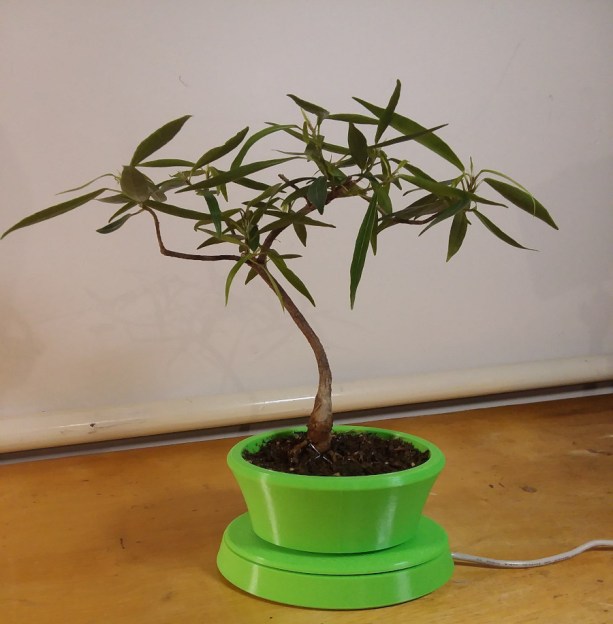
While the impulse to solving problems in complex systems is often to grab a microcontroller and some sensors to automate the problem away, interfacing with the real world is often a lot more difficult than it appears. Measuring soil moisture, for example, seems like it would be an easy way of ensuring plants get the proper amount of water, but soil is a challenging environment for electronics and this solution often causes more problems than it solves. [Kevin] noticed this problem with soil moisture sensors and set about solving this problem with a much simpler, though indirect, method of monitoring his plants electronically.
Rather than relying on soil conductivity for testing soil moisture levels, he has developed an alternate method of determining if the plants need to be watered simply by continuously weighing them. The hypothesis that he had was that a plant that needs water will weigh less as the available water respirates out of the plant or evaporates from the soil. This means that using a reliable sensor like a load cell to measure weight rather than an unreliable one like a soil moisture sensor will result in more reliable data he can use to automate his plants’ watering.
[Kevin]’s build is based around an ESP32 and a commercially-available load cell which are all built into the base of the plant’s pot. The design hides all of the electronics in a pleasant enclosure and is able to communicate relevant info wirelessly as well. The real story here, however, isn’t a novel use of an ESP32 chip, but rather out-of-the-box problem solving by using an atypical sensor to solve this problem. That’s not to say that you can’t ever use other sensors to directly monitor your garden and automate its health, though.
No comments:
Post a Comment